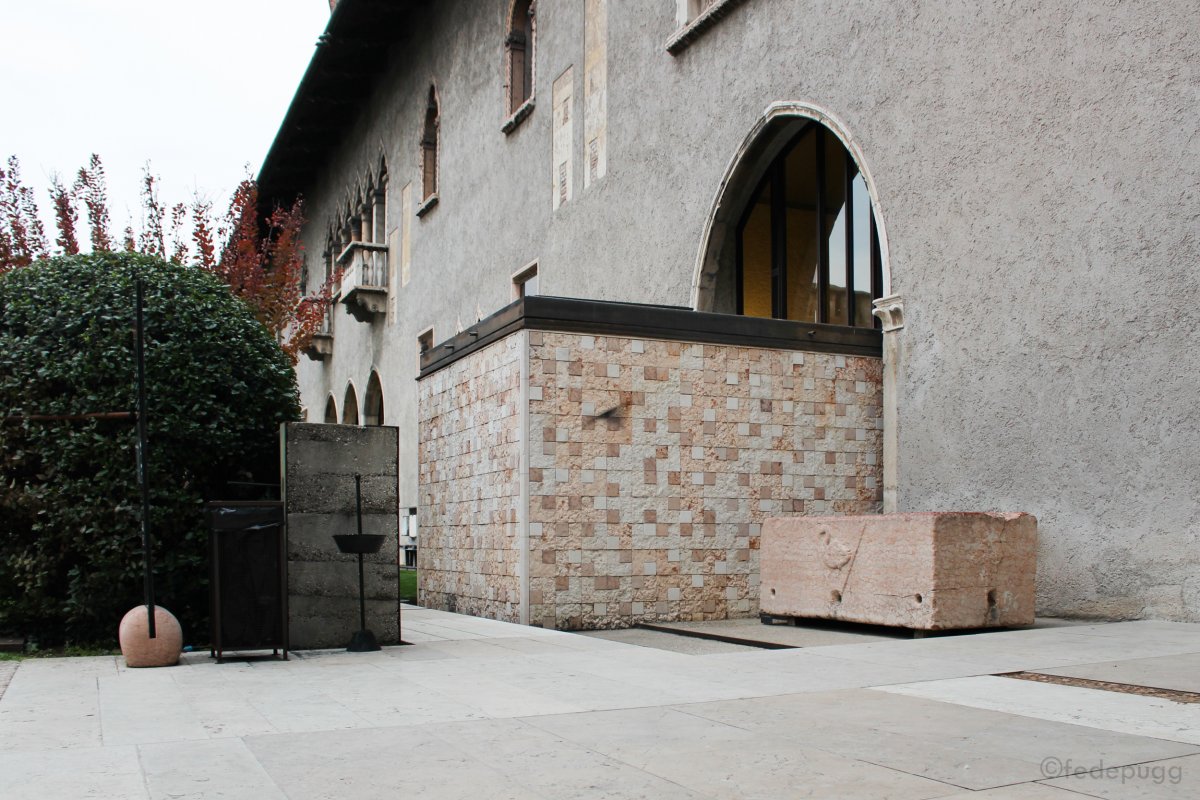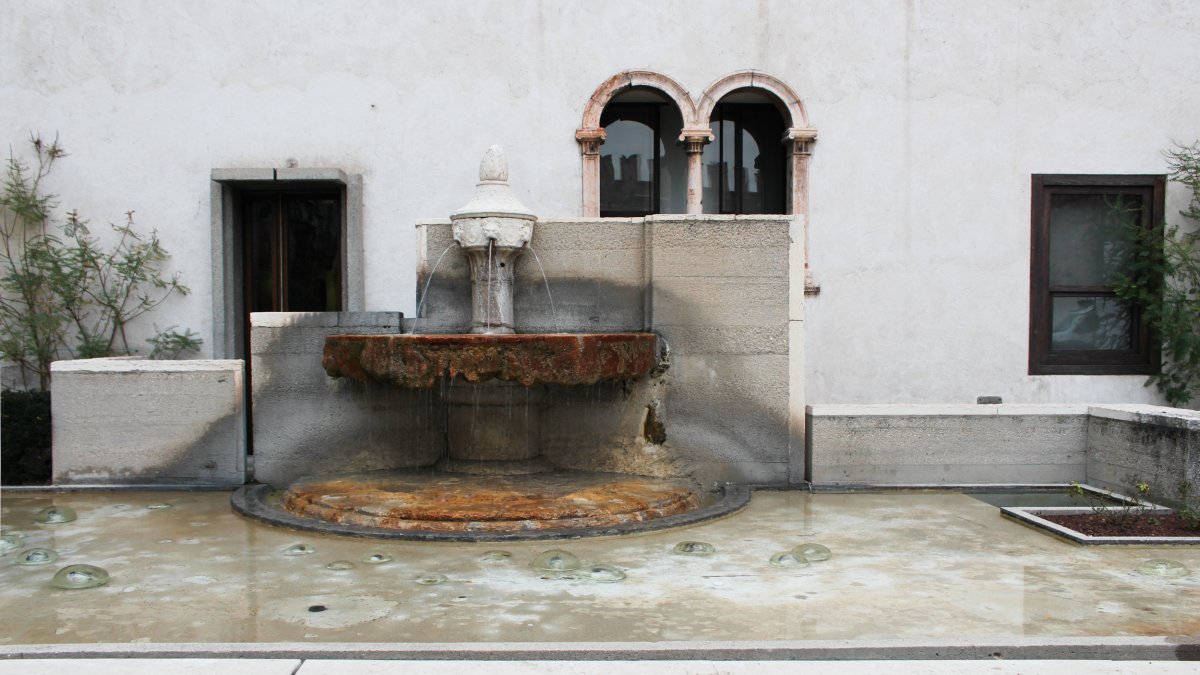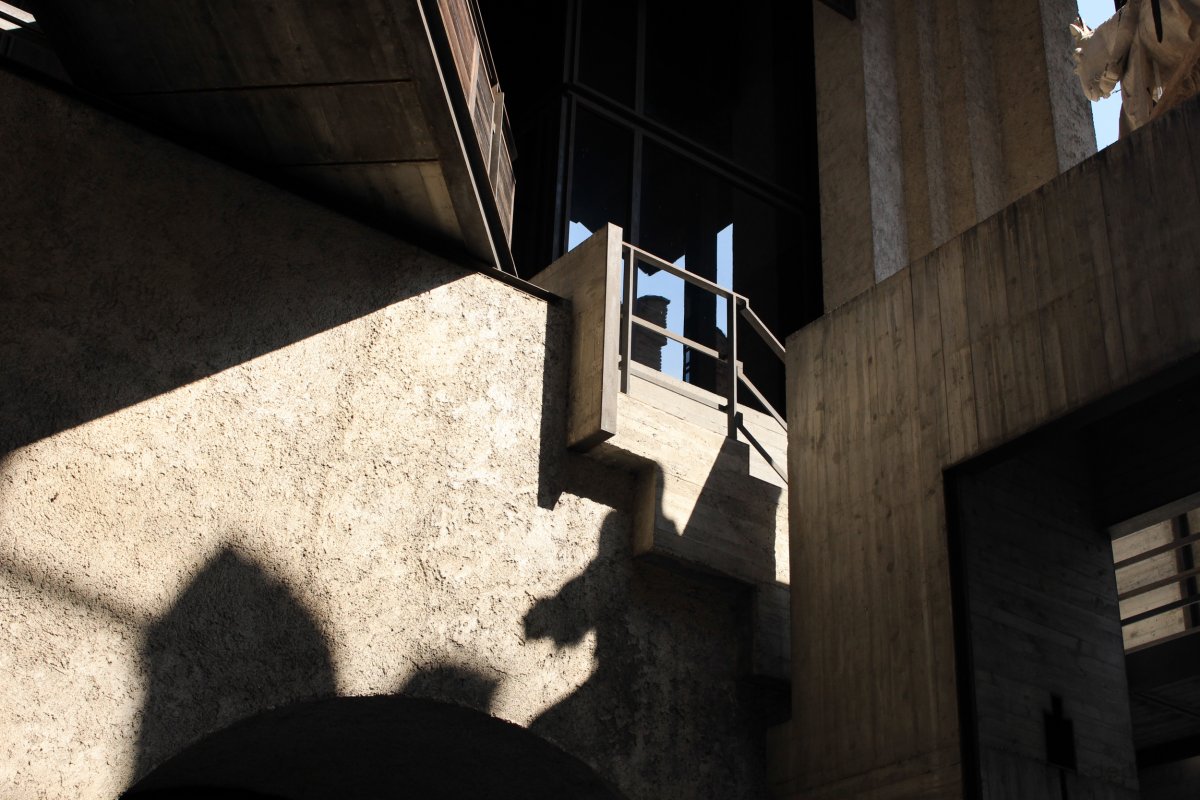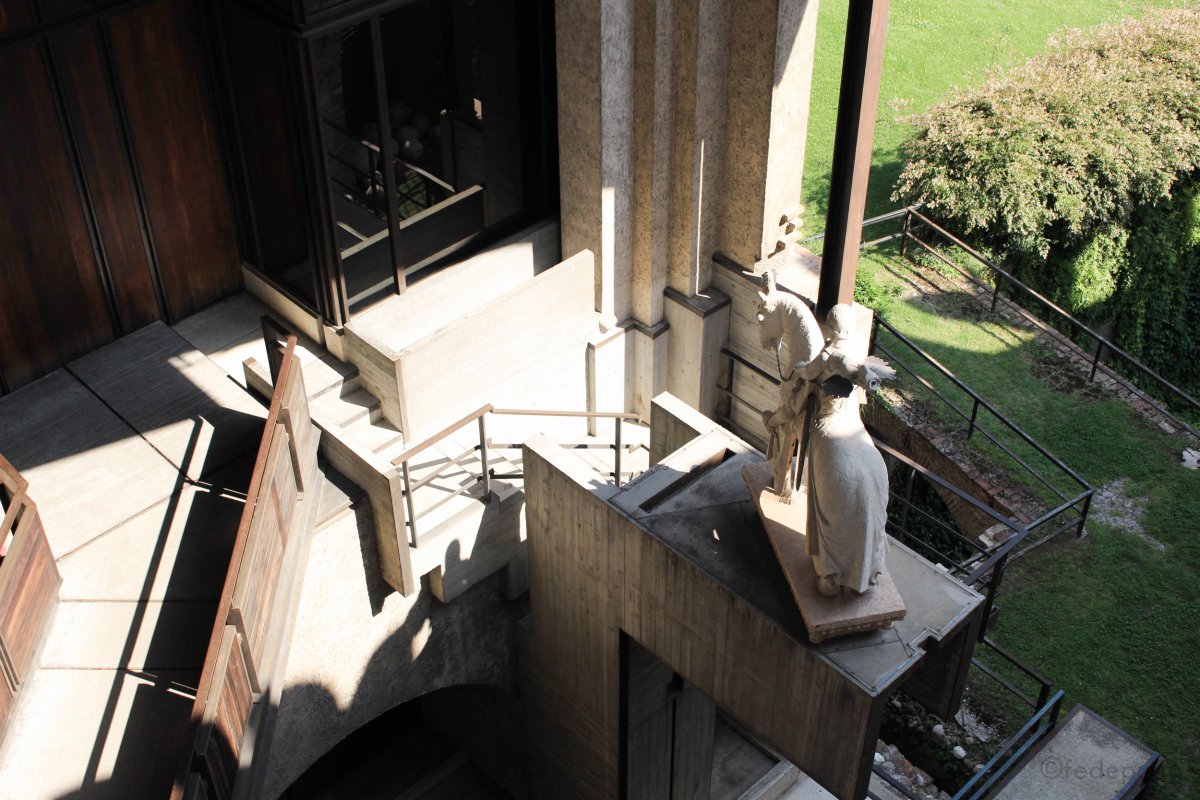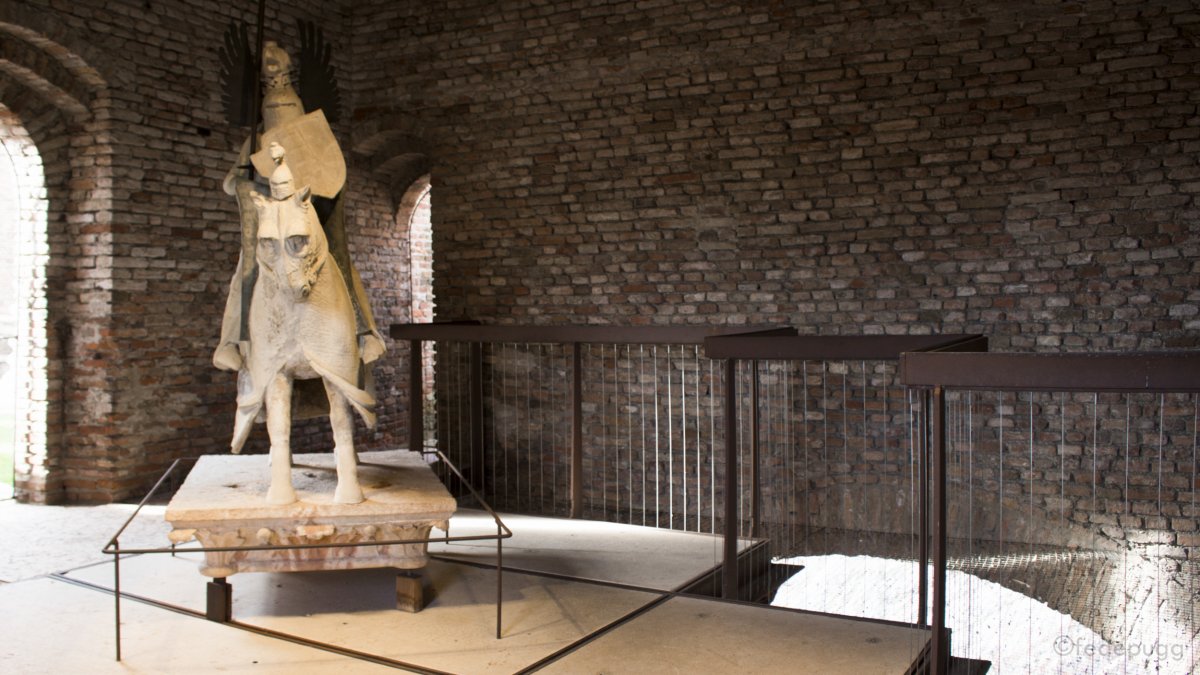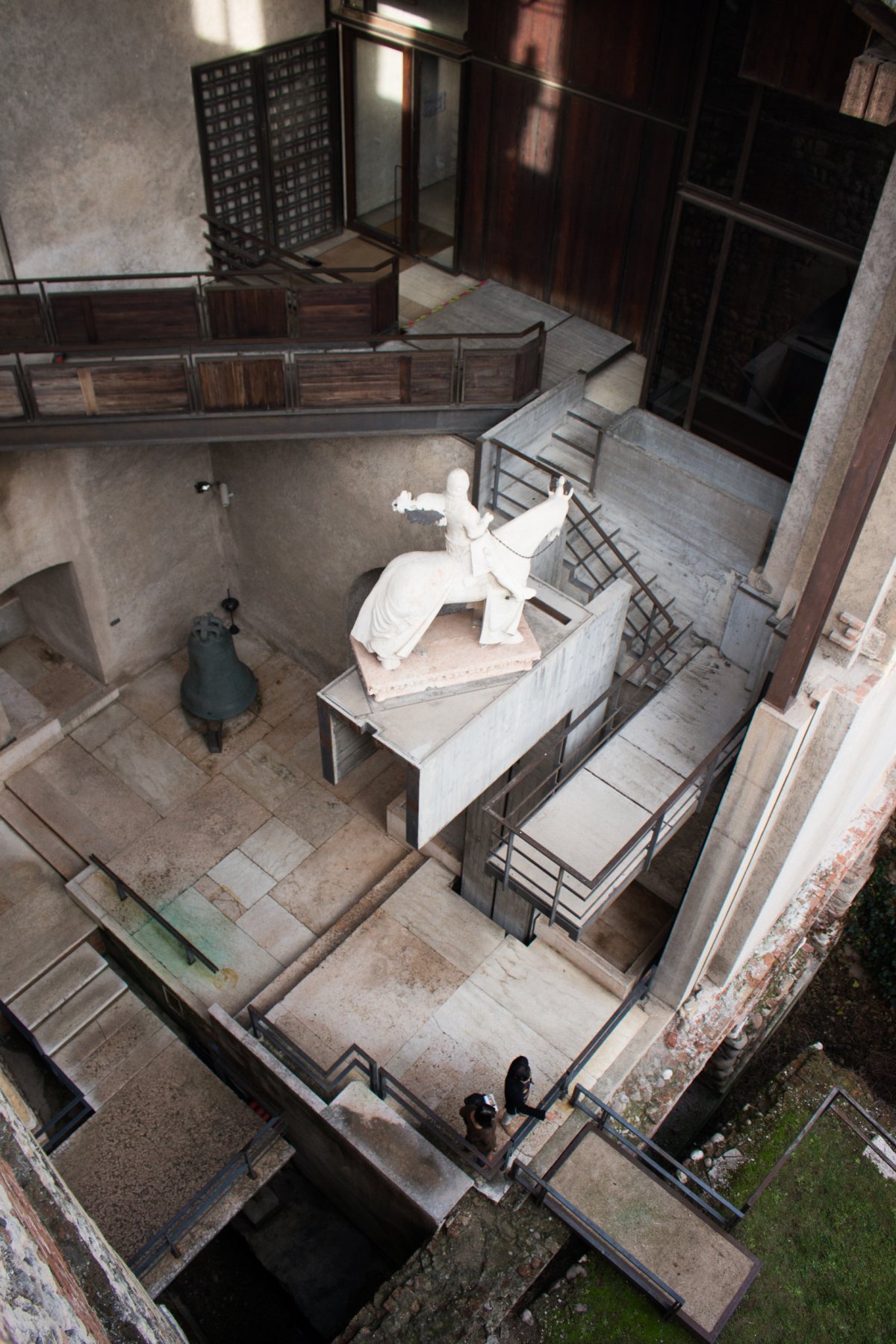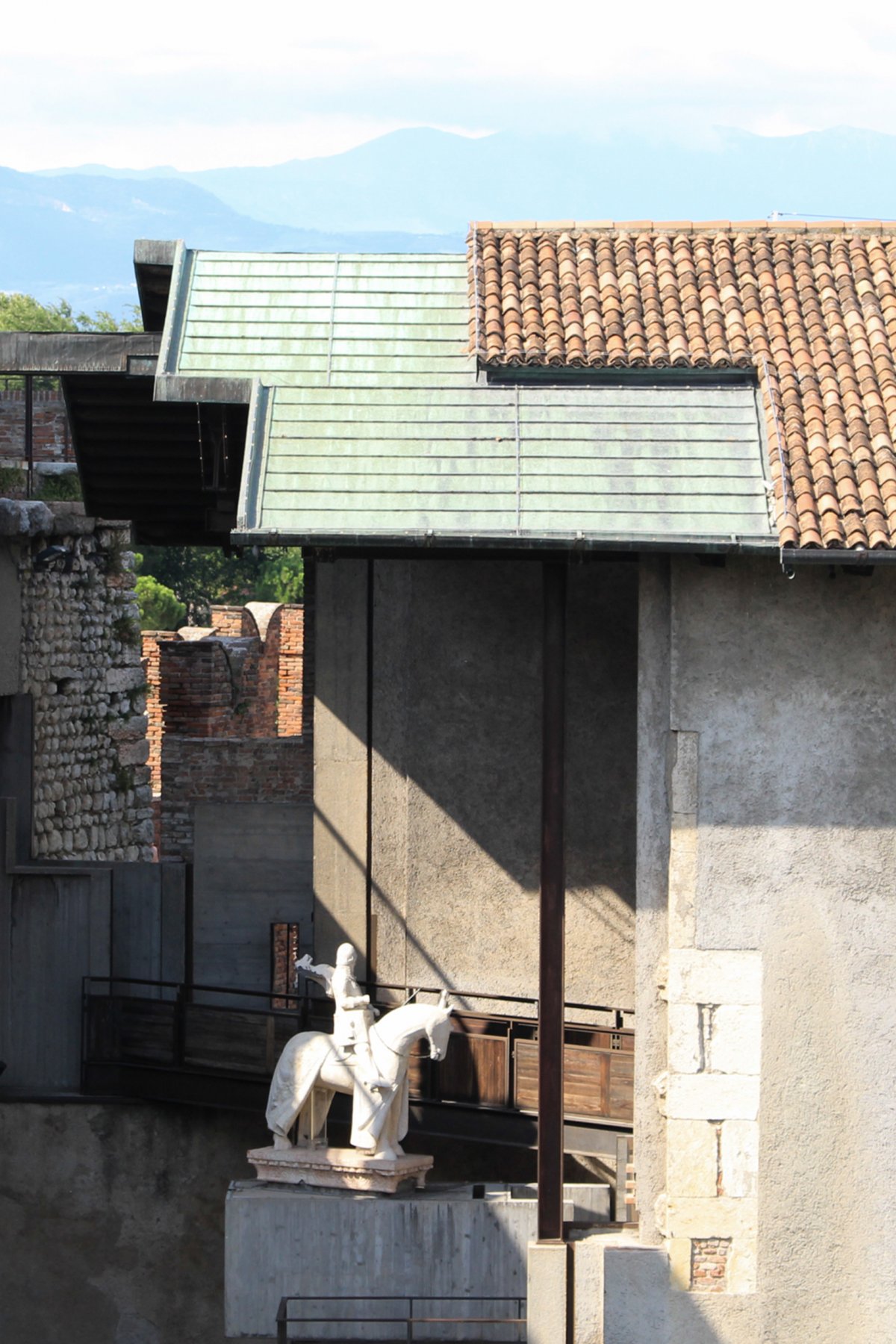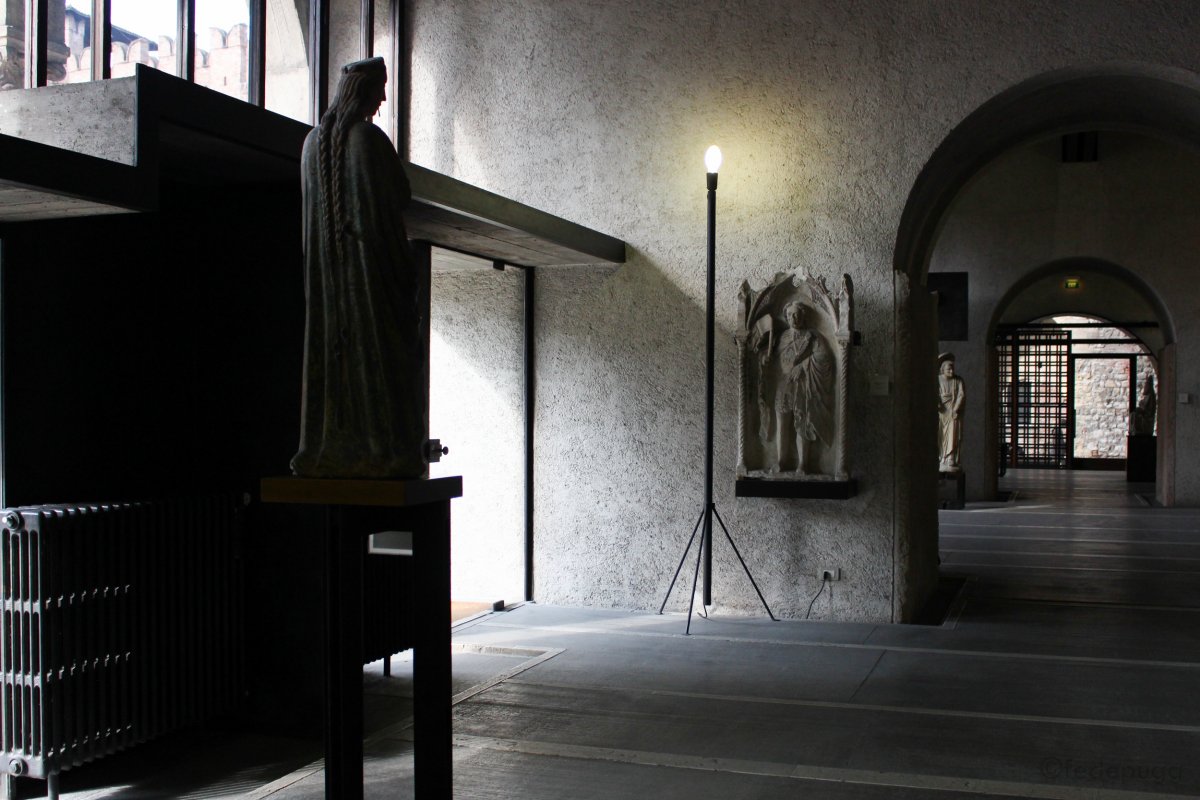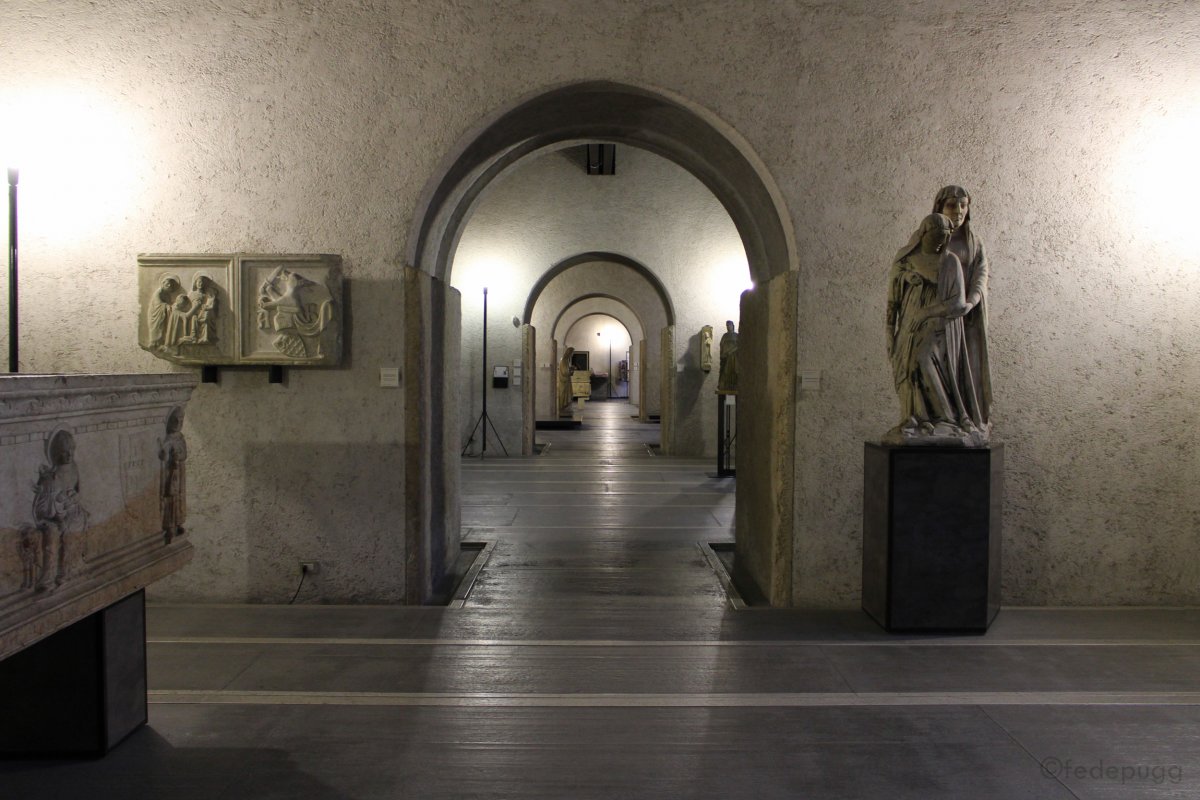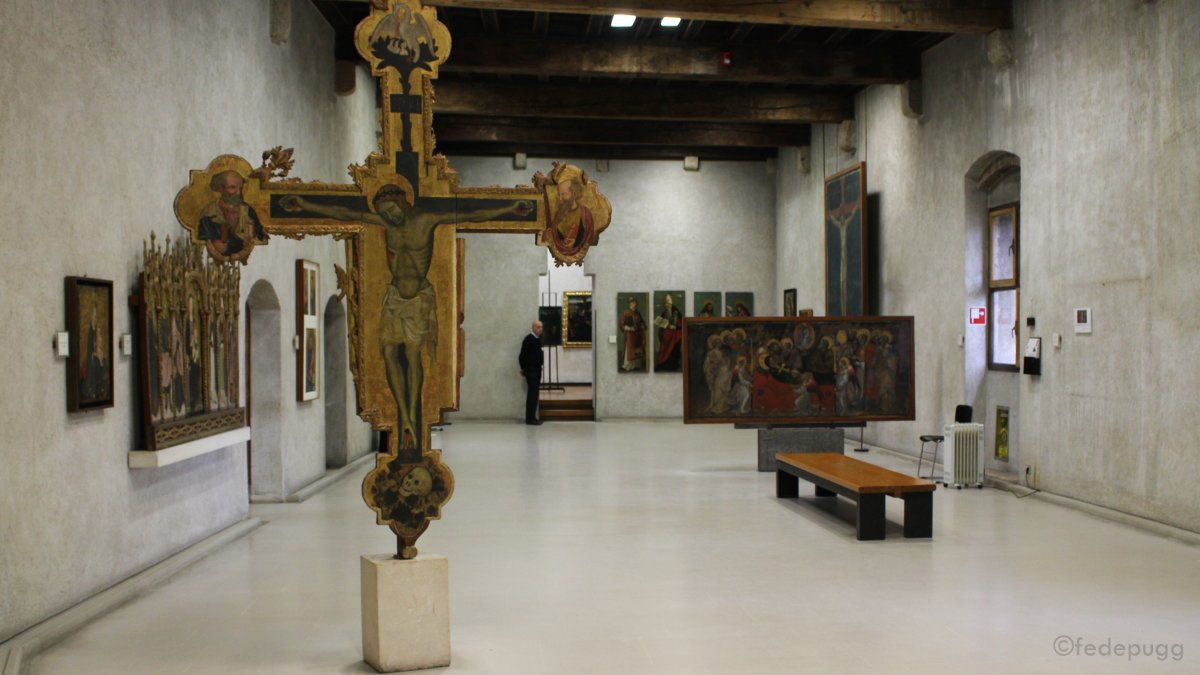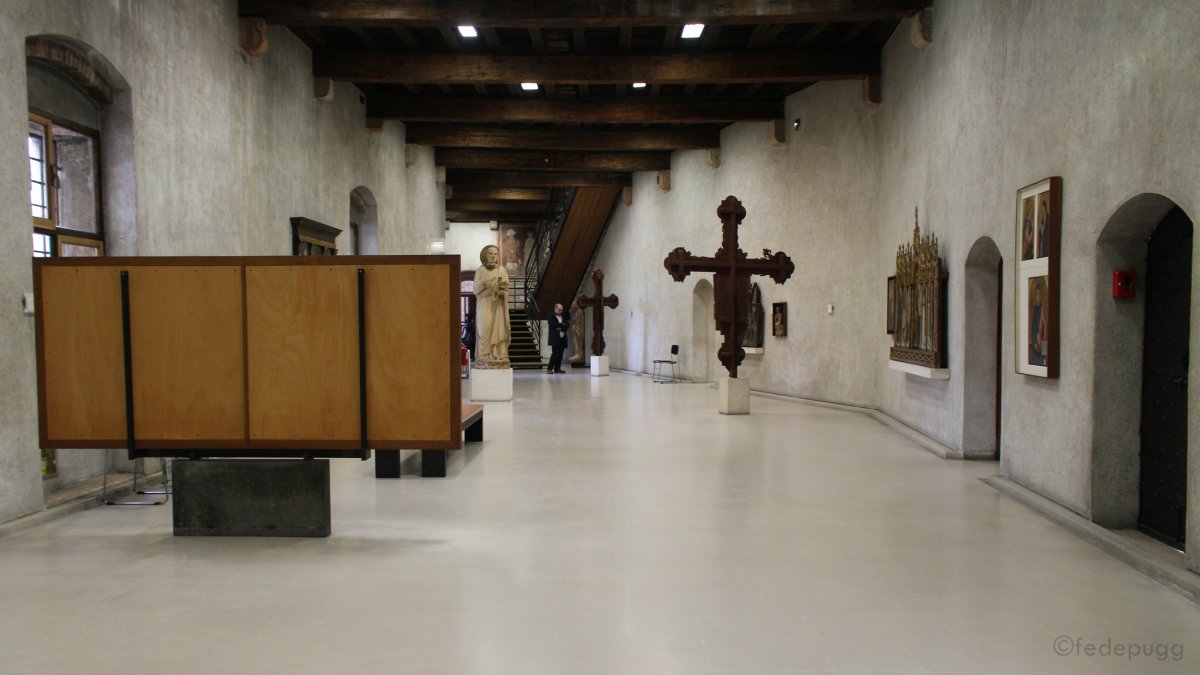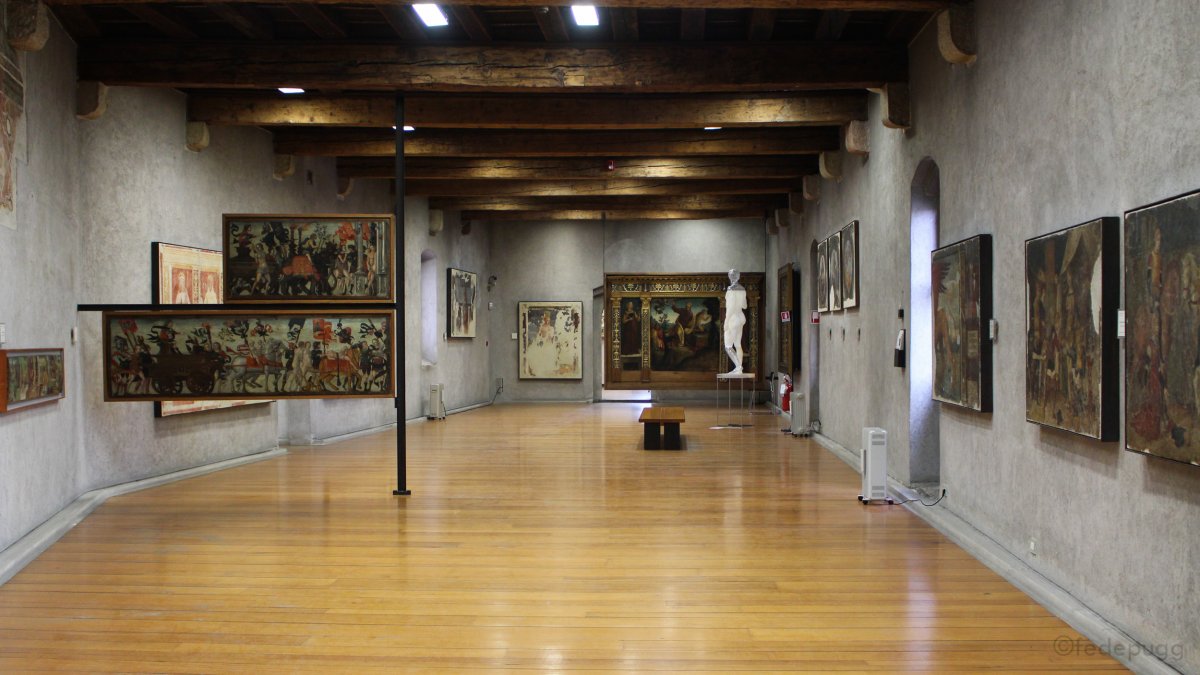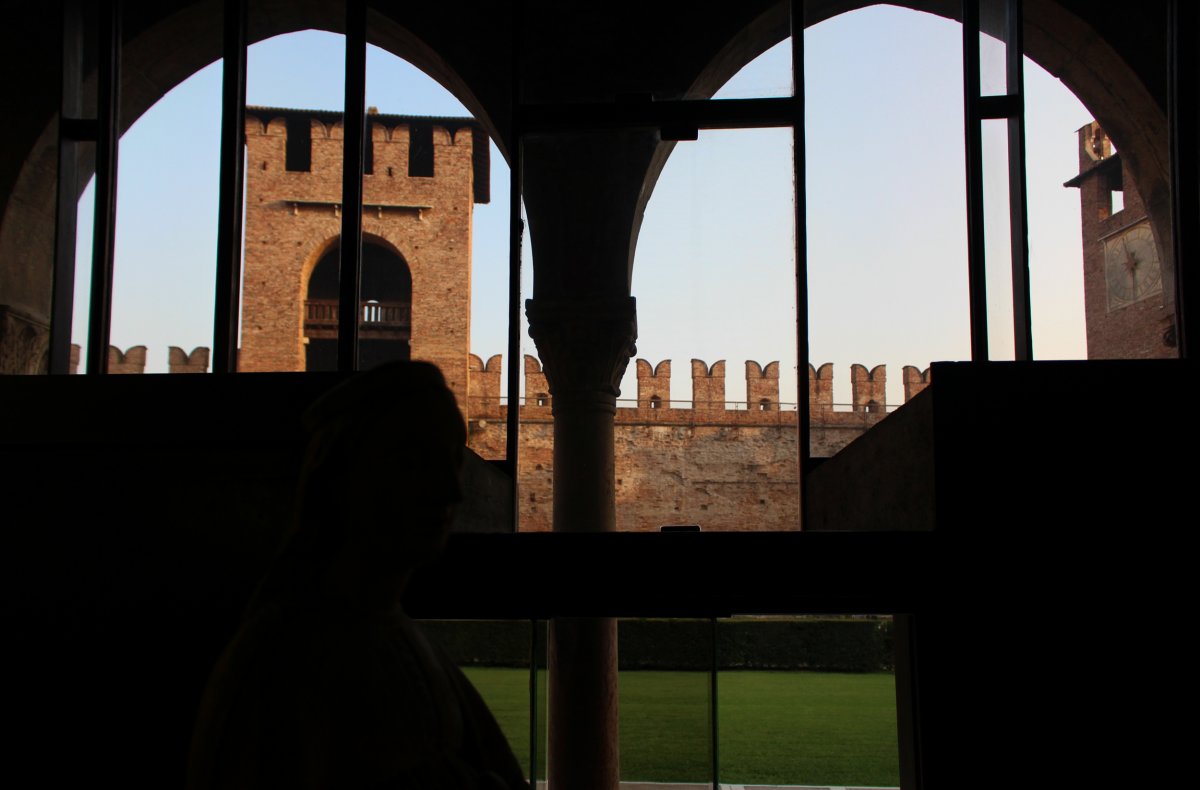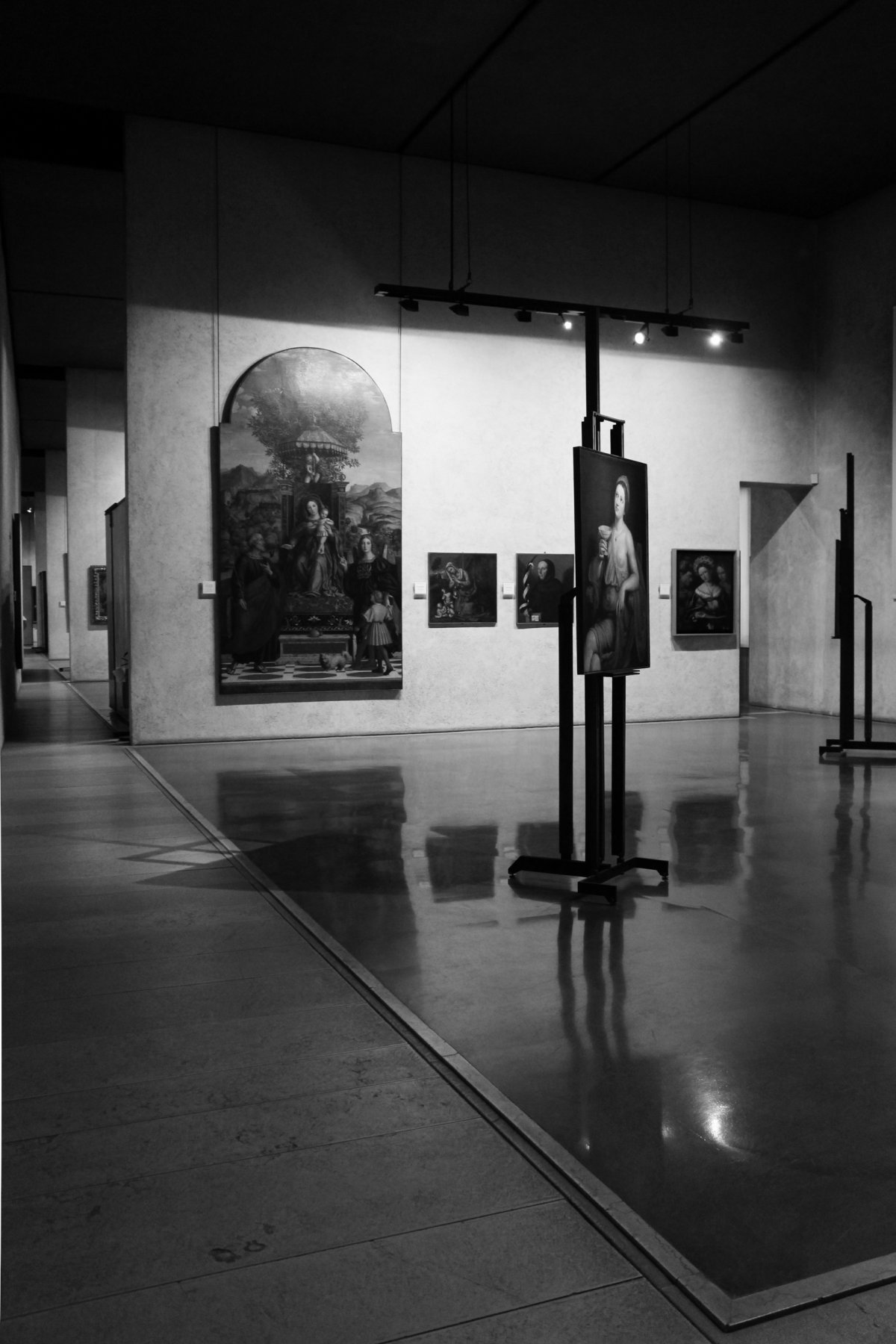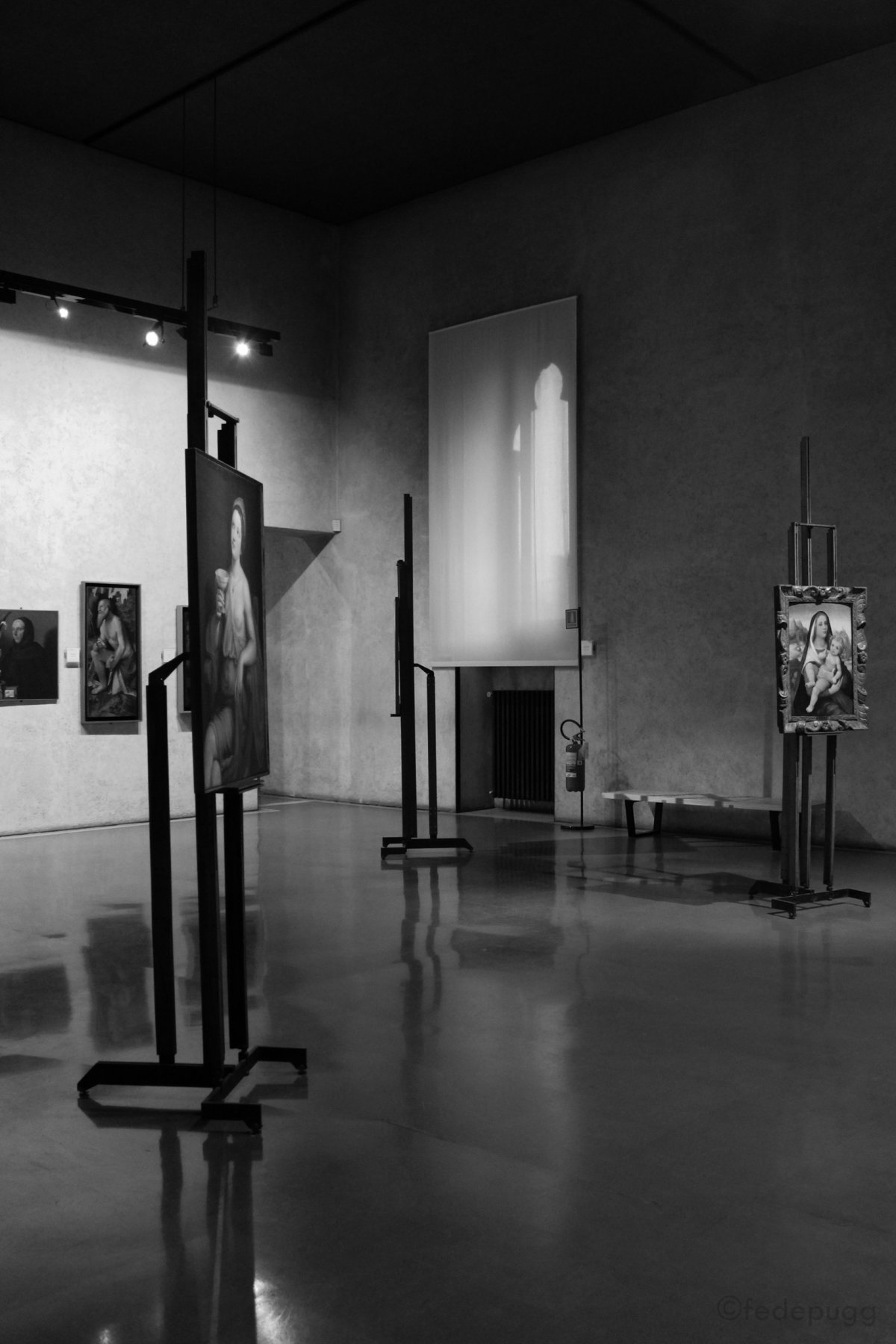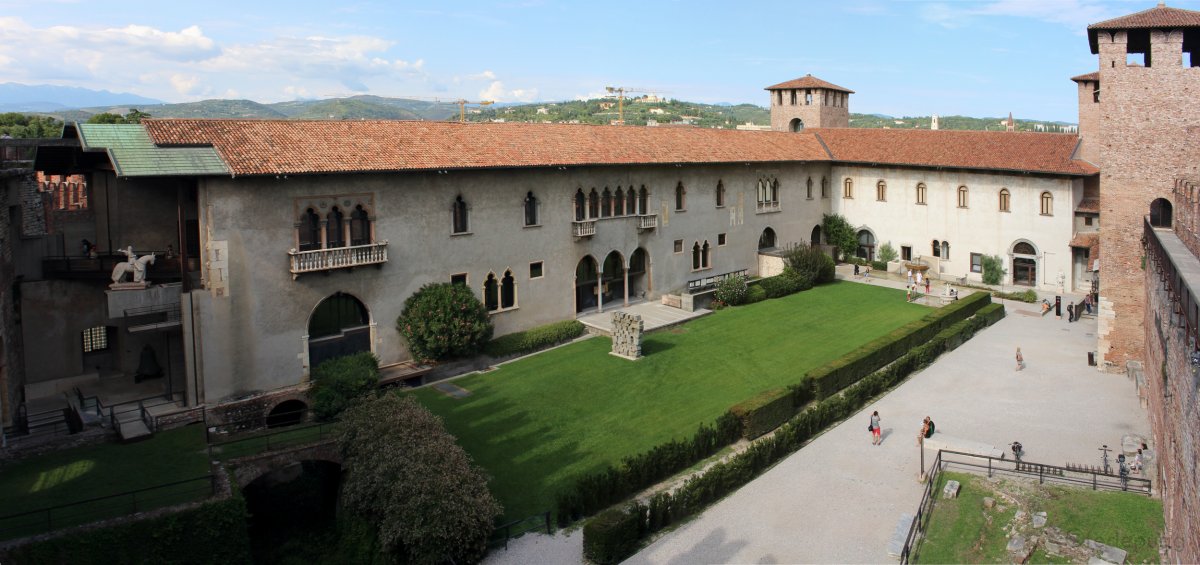
It is worth mentioning that, in terms of the history of architecture, the strong castle that symbolises and characterizes the town can only be changed in the near future, compared with the long span of history. Licisco Magagnato contacted Carlo Scarpa in 1958 for a temporary exhibition.
The synergy between the former partisan, political warrior, art historian and professor Venice continued at various stages until the museum opened in 1964. Scarpa's intervention, as a vast intermediary between the old entity and the renovation, was designed to calibrate a new museum based on the ideas of modern Museographic museums, with a slow and intimate visiting experience.
The main interventions are radical modification to the structure and a new path of visit, the opening of a forgotten but existing gate connecting the two main courtyards, passing under the public street of the bridge. Or also the collocation of the Cangrande’s statue, the most precious valuable monument of the veronese history on a 7 meters concrete basament.
All is completed by several fine interventions such as the “insertion” of a mondrian-inspired layer behind the gothic openings of the two storeys of the Galleria, or the great work behind the choose and the matching between cements, concretes, plasters, metals, woods, textiles, venetian stuccos, which single value is multiplied by the differents works on their surfaces; it contributes definitely to give the feeling of a timeless place.
- Architect: Carlo Alberto Scarpa(1906-1978)
- Photos: Federico Puggioni
- Words: Qianqian

